- Home
- John Berger
Photocopies: Encounters
Photocopies: Encounters Read online
Acclaim for
JOHN BERGER and Photocopies
“[Photocopies] has a still, insistent beauty.… Berger whispers in our ears … full of awe and wonder about art and nature, the body and the soul.”
—The Observer (London)
“John Berger is genius invisible. His life’s work for me is synonymous with the creation of unforgettable living portraits.… Berger’s ‘photocopied’ portraits are all unmistakable originals.”
—Scotland on Sunday
“[John Berger] guides his readers tenderly and with intimate humor.”
—Michael Ondaatje
“John Berger is one of the most original of contemporary thinkers. [His] ability to see something clearly, with fresh surprise yet profound understanding, makes his writing singularly moving and informative.”
—Washington Times
“Photocopies is that strange and wonderful thing: a simple little book full of mystery.”
—The Sunday Telegraph (London)
BY THE SAME AUTHOR
Into Their Labours
(Pig Earth, Once in Europa, Lilac and Flag: A Trilogy)
A Painter of Our Time
Permanent Red
The Foot of Clive
Corker’s Freedom
A Fortunate Man
Art and Revolution
The Moment of Cubism and Other Essays
The Look of Things: Selected Essays and Articles
Ways of Seeing
Another Way of Telling
A Seventh Man
G.
About Looking
And Our Faces, My Heart, Brief as Photos
The Sense of Sight
The Success and Failure of Picasso
Keeping a Rendezvous
To the Wedding
First Vintage International Edition, December 1997
Copyright © 1996 by John Berger
All rights reserved under International and Pan-American Copyright Conventions. Published in the United States by Vintage Books, a division of Random House, Inc., New York, and simultaneously in Canada by Random House of Canada Limited, Toronto. Originally published in Germany in a shorter version by Carl Hanser Verlag in 1995 as Mann und Frau, unter einem Pflaumenbaum stehend. This translation originally published in hardcover in Great Britain by Bloomsbury Publishing PLC., London, and in the United States by Pantheon Books, a division of Random House, Inc., New York, in 1996.
The Library of Congress has cataloged the Pantheon edition as follows:
Berger, John.
Photocopies / John Berger.
p. cm.
I. Title
PR6052.E56P48 1996
823′.914–dc20 96-11650
Random House Web address: http://www.randomhouse.com/
eISBN: 978-0-307-79433-8
v3.1
For
WOLFRAM SCHÜTTE
at the Frankfurter Rundschau
who was the godfather and first editor
of these Photocopies
[Contents]
Cover
Other Books by This Author
Title Page
Copyright
Dedication
1 A Woman and Man Standing by a Plum Tree
2 Woman with a Dog on Her Lap
3 Passenger to Omagh
4 A Man Wearing a Lacoste Sweater
5 An Old Woman with a Pram
6 A Young Woman with Hand to Her Chin
7 A Man in One-Piece Leathers and a Crash Helmet Stands Very Still
8 Two Dogs Under a Rock
9 A House Designed by Le Corbusier
10 A Woman on a Bicycle
11 A Man Begging in the Métro
12 Sheets of Paper Laid on the Grass
13 Psalm 139: ‘… you know me when I sit and when I rise …’
14 Street Theatre
15 A Bunch of Flowers in a Glass
16 Two Recumbent Male Figures Wrestling on a Sidewalk
17 A Man Holding Up a Horse’s Bridle
18 Island of Sifnos
19 A Painting of an Electric Light Bulb
20 A Girl Like Antigone
21 A Friend Talking
22 Two Men Beside a Cow’s Head
23 A Man Baring His Chest
24 A House in the Sabine Mountains
25 Two Cats in a Basket
26 A Young Woman Wearing a Chapka
27 Men and Women Sitting at a Table and Eating
28 Room 19
29 Subcomandante Insurgente
PHOTO BY MARISA CAMINO
[1]
A Woman and Man Standing by a Plum Tree
At seven in the evening a yellow car pulled up by the house. The yellow of a French post van. But the car had Spanish plates. On its bonnet were stuck pieces of Scotch tape. Painted yellow. Not quite the same yellow. The car, however, was parked where nobody had ever parked a car. It was a possible place. It didn’t obstruct there. But nobody had seen the place before.
The driver wore jeans and a dusty black shirt with white buttons. She had come from Galicia.
I had seen her once previously in my life. For five minutes in Madrid. I was giving a public reading there, and, afterwards, this woman, about thirty years old, came and handed me a roll of brown paper. It is a present for you. I unrolled it and saw a drawing. She earned her living, she said, restoring frescos in churches. When something is covered in plaster and you put it under water, the white is washed off, and its usual colour comes back. But often when it dries again, it looks a little whitish. It can even happen to your fingernails. When the woman said she restored frescos, I thought I saw a little of this whitishness on her clothes, on the backs of her hands. Before I could ask her anything more, she had disappeared.
Later I looked at her drawing. It had something to do with the world of fishes. I wanted to thank her, but I hadn’t caught her name and the signature on the drawing was hard to decipher. The first name began with M and the second, I thought, with C.
Now this unknown restorer of frescos had arrived unexpectedly. I discovered her name. We talked of this and that: of Galicia, peasants, Paul Klee, the Documenta exhibition in Kessel. It seems we talked of nothing. If she came, it wasn’t really to talk.
She came like one of her drawings about the world of fishes, or perhaps about the world of animals. She lives with animals. Certain animals. She knows their secrets, which are not secrets to them, but secrets from us. I doubt whether she chose the animals she lives with; they, I guess, chose her. Which would be normal, for it is they who live in her. Inhabit her. They were sitting invisibly inside her at the table.
She lives with them as she lives with her own kidneys, her own oesophagus, her own gall bladder. If she were dissected on an operating table, her animals would no longer be there – just as when the timber of a forest is felled, the wood-cutters never find boars or foxes or woodpeckers.
They come and go, her animals, and she’s aware of each departure, and each new arrival. They produce irritations, they provoke impulses and, especially, they show her tricks, theirs. The tricks perform themselves in her, under her skin. This is what I thought as we looked at each other across the table.
What animals? If she was asked, they would never let her reply. All animals except man are cautious. So they would never allow a catalogue. And she respects their animal caution. She even imitates it – I could see this as I watched her fingers.
She sat there drinking her coffee in her black shirt. Her hair was freshly washed, but probably she had not been to a coiffeur for years. In another life but with the same physical presence, she might have looked after (or stolen) horses – a figure disappearing on the edge of a wood, riding one horse and leading another. She was th
in and sinewy like those who live close to horses. But in her present life she made mysterious drawings on home-made paper, she restored frescos and the animals who were closest to her were no longer of the Equidae family.
This time it was perhaps the Mustelidae family. The belette with her black tail, or the ermine, sharp, timid, who leads where you’ve never been! Animals who live, not play, hide-and-seek, and who can bite two ears at the same time, because so swift, whose bellies are white and prized by judges, and who have learnt from the snake to undulate their bodies as they accelerate, dip, curve, disappear.
We ate supper. Outside it started to rain, hard. We insisted she stayed the night. I showed her where she could wash and sleep. She stopped before a drawing framed on the wall in the kitchen and gazed at it. She didn’t look intently. She just gazed at this drawing of figures with some writing around them. The writing was a quotation from the Eumenides about the Furies demanding vengeance, and another from the Gospel of St John: ‘… my peace I give unto you: not as the world giveth, give I unto you. Let not your heart be troubled, neither let it be afraid.’
She didn’t say anything or make any sign. Her face was turned away. Simply her body announced how she was familiar with these words. Her body made no movement. No gesture. Just a withdrawal which might be mistaken for insolence.
All that night it rained.
The next morning she said she must be on her way to Kessel. Before she left, could she take a photograph?
We were drinking coffee in the kitchen.
You saw my camera? she asked.
No.
You didn’t notice it last night?
She nodded to where her haversack was, on the floor near the door. Beside her haversack was a box which I had indeed noticed because of its silver colour. About the size of a mechanic’s tool box. In places it had been repaired with black sealing tape. I hadn’t asked myself what she carried in it. Maybe paints. Or apples. Or sandals and sun-tan lotion.
Like the original camera, she said, like the first! And she handed me the box. It weighed nothing. Its sides were made of plywood.
There’s not enough light here, she said, let’s go outside.
We went out to the plum trees where there’s a table in the grass and there she looked up at the still cloudy sky. Between two minutes and three, she calculated out loud, and placed the box carefully on the edge of the table. In the centre of one of its long sides there was a white rectangular plaster, like you put over a small blister or burn. This plaster was framed by black tape.
With her cautious fingers she pulled off the white plaster to reveal an aperture, a hole. Then she took my hand.
The two of us stood there facing the camera. We moved of course, but not more than the plum trees did in the wind. Minutes passed. Whilst we stood there, we reflected the light, and what we reflected went through the black hole into the dark box.
It’ll be of us, she said, and we waited expectantly.
[2]
Woman with a Dog on Her Lap
When it comes to my imagination, Angeline – as might be expected of her – is obstinately independent. Try as I do, I cannot imagine her as a young woman. And try as I do, I cannot really accept that she’s now dead, that she’s been dead for three years.
She keeps on watching me. I always amused her, the more so when I wasn’t trying to, and now that she’s dead she laughs out loud – even if silently! She knew she was going to play this trick, of course. It belonged to one of her secret plans, which she used to work out when she couldn’t sleep at night, and when, the following morning, she had to tell a lie in order to communicate the enormity of the night she’d passed through. The lie was that she hadn’t once closed her eyes.
When she took off her glasses, her eyes were no longer hard but full of wonder, and so it’s difficult to explain why I could never imagine her young. Once she had a swollen knee and she asked me to rub some pomade on to it: her knees and thighs were as soft as a young bride’s. When she undid her plaits, her white hair was abundant and fell down to her shoulder-blades. On the rare occasions when I kissed her – to wish her a Happy New Year, for example – she always pulled both of us into a corner, so that we should not be seen. Yet despite these things, I could not imagine her young.
I suppose the explanation was her mourning. When you put on black – and she wore black for thirty years – you put youth behind you for ever. I remember a man on a bicycle saying when the traffic had to stop to let a wedding cortège pass: the sign of the newlywed is a young woman at an open window with a duvet in her arms, and the sign of widowhood is an old woman alone chopping firewood with an axe.
Angeline was happy more often than she cared to admit. Coming back from the forest loaded with dead wood to chop, she was happy. In principle, she tried not to laugh in public: it was not appropriate to the black she wore. Covertly, she was happy when she made someone else laugh. And she had a gift of repartee which was inimitable. Her tactic was to cut, as with a knife, what she had just heard and then to make a bow with it. He’s got billy-goat shit in his pockets, she said of Giscard d’Estaing on the screen. Every morning, except on Sundays, I used to hear the postman laughing in her kitchen for ten minutes. Sometimes with me she would let herself laugh. Jésu, Marie, et Joseph, comment tu es bête! she would say.
She was in mourning for her husband but more for her son, who had been killed in a road accident when he was in his early twenties. Her suffering then – and she clasped this suffering thirty years because it was all that was left of her son which she could clasp – gave her a sense of solidarity with anybody else who was suffering. She visited the sick. She visited the bereaved. Her suffering sought the suffering of others so that they could stand side by side.
On several occasions she asked me how to send cash to the television to buy food to send to a country she had seen the night before where people were starving.
At the same time she had a deep feeling for luxury. She owned three goats, she needed to count her money, and she lived in a space of no more than fifty square metres, but she could imagine luxury. This was why her most loving insult was feignant – which means idle. Her dog and her goats were feignant. And she said I risked to be so. When Angeline was young, idleness in the village was the summit of luxury.
Her dog was called Mickey after the Mouse. Small, black, noisy and silly. A dog who never grew up. She swore at him. She locked him out. When he was sick he hid under the stove which she polished twice a week. But when he was bitten by another dog she nursed him on her lap as Calypso nursed Odysseus.
And Angeline waited until this morning to play the trick on me.
Certain villages appear to have come into being haphazardly – like dice thrown across a table. The reason for other villages is more obvious: they were built where two valleys meet, or where a river narrows. Yet others look as though they were the result of a sleight of hand, as if, from the beginning, from the very choice of their site, they had the pretension to show something off. As if the village was built from flair! Our village is of this last kind.
It looks happier than it is. The church has a fine steeple. The cemetery is like a balcony above it. The Mairie with its tricolore stands back from and above the road – almost with the stance of a château. The two cafés – including the Républicain Lyre – have steps leading up to them. And on the hillside behind, the farms are arranged like loges in a gigantic green theatre.
I was thinking about this as I approached the village this morning in the winter sunlight. A lot has changed recently, but from a distance in the winter sunlight, it might still be the village it was at the beginning of the century. And suddenly this morning I saw it like that. It was different from the ten thousand other times I’d seen it. It was full of mysterious promises.
I knew I would be married in its church, I knew that my children would go to its school, that my husband would take the mare each spring on March the 14th to be blessed by the Curé. It was at that moment I heard h
er silent laughter. It was she who had been looking at the village, not I, and she had made me see it through her eyes. And she was laughing because she had made me see it through her eyes when young.
[3]
Passenger to Omagh
There’s a painting by Jack Yeats which shows a woman bare-back rider, a rider of the haute école, with her thoroughbred horse, and she’s talking to a clown who sits hunched up on a box near the entrance to the Big Top. It’s entitled: That Grand Conversation Was Under the Rose.
When Jack Yeats was very old, I spent an evening with him in Dublin. An unforgettable evening of stories and whiskey. I didn’t ask him then because I didn’t know I would need it, but thirty years later (he’d be 125 years old today) I fancy he’d agree if I borrowed his title for the duration of a bus ride.
Out of season between Dublin and Derry there are two buses a day. The road crosses the right shoulder of Ireland. In December, when we took the bus, there was a small rain and the stone walls and the cattle in the irregular fields were drenched. Snug in our seats, we were sucking peppermints and reading yesterday’s newspapers from Paris. She got on at Castleblaney. Carrying a plastic carrier bag, she walked down the aisle and took one of the empty seats.

 Once in Europa
Once in Europa To the Wedding
To the Wedding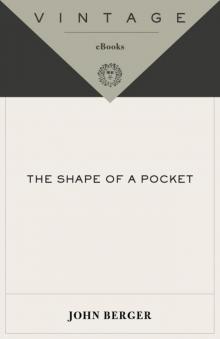 The Shape of a Pocket
The Shape of a Pocket Here Is Where We Meet
Here Is Where We Meet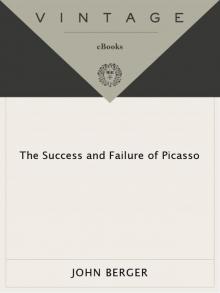 The Success and Failure of Picasso
The Success and Failure of Picasso G.
G.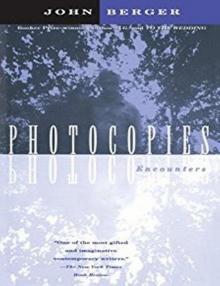 Photocopies: Encounters
Photocopies: Encounters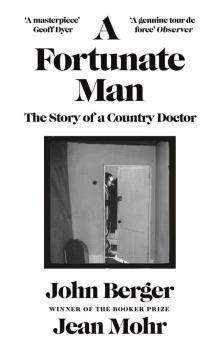 A Fortunate Man: The Story of a Country Doctor
A Fortunate Man: The Story of a Country Doctor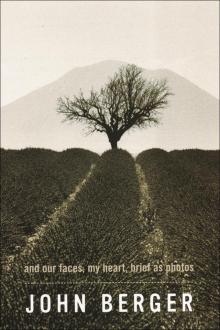 And Our Faces, My Heart, Brief as Photos
And Our Faces, My Heart, Brief as Photos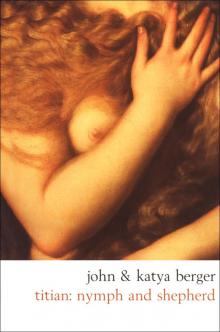 Titian
Titian A Fortunate Man
A Fortunate Man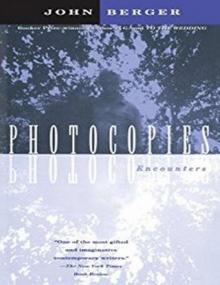 Photocopies: Encounters (Vintage International)
Photocopies: Encounters (Vintage International) Selected Essays of John Berger
Selected Essays of John Berger